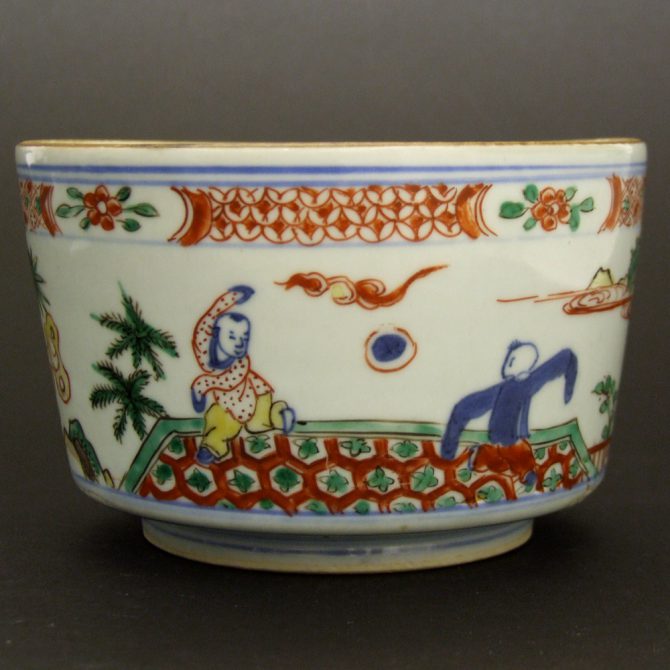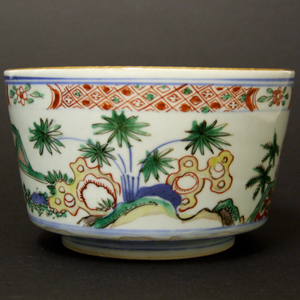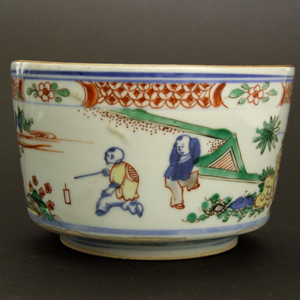
CHONGZHEN or SHUNZHI c.1640 – 1655 Transitional Porcelain
An Unusual Late Ming or Early Qing Porcelain Wucai Container for the Japanese Market, Probably a Hiire. Late Chongzhen Period 1628 – 1644 or Shunzhi 1644-1661 Period. Decorated with Boys at Play in a Garden Landscape. Two Boys Play with a `Football` on a Brightly Coloured Rug and Another Boy Lights a Firework While Another Watches. The Interior of the Object is Unglazed Apart From an Area Below the Rim.
SOLD
- Condition
- A large firing crack that has extended crack. The body of the piece is slightly misshapen where the firing crack is.
- Size
- Diameter : 14 cm (5 1/2 inches)
- Provenance
- N/A
- Stock number
- 21865
Information
Hiire :
It is possible this object is an incense burner, however the interior wall is unglazed a long way up the sides for such an object. A more plausible explanation might be that the object is connected with the use of tobacco, a fashionable past-time in 17th century Japan. Containers of this type, called Hiire in Japan, were used to place charcoal or hot ashes from which a pipe could be lit.
Wucai :
Wucai means five coloured decoration. This consists of the overglaze enamel colours ; red, green, and yellow, underglaze cobalt blue and the white of the porcelain itself.
Ming Porcelain for Japan :
During the late Ming Period the Chinese made a large among of porcelain for the Japanese market, it was made from the Wanli period (1573-1620) and ended in the Chongzhen period (1628-1644), the main period of production being the 1620`2 and 1630`s. The porcelain objects produced were made especially for the Japanese market, both the shapes and the designs were tailored to Japanese taste, the production process too allowed for Japanese aesthetics to be included in the finished object. Its seams firing faults were added, repaired tears in the leather-hard body were too frequent to not, in some cases, be deliberate. These imperfections as well as the fritting Mushikui (insect-nibbled) rims and kiln grit on the footrims all added to the Japanese aesthetic. The shapes created were often expressly made for the Japanese tea ceremony meal, the Kaiseki, small dishes for serving food at the tea ceremony are the most commonly encountered form. Designs, presumably taken from Japanese drawings sent to China, are very varied, often using large amount of the white porcelain contrasting well with the asymmetry of the design.

